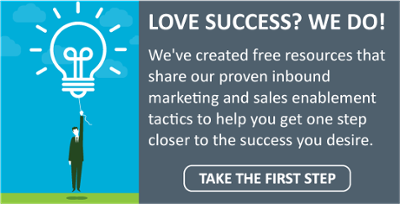
As a salesperson, is your goal to help people or to simply sell something? Salespeople that care about their customers and provide value to them have long-term success as trusted advisors.
Here are 6 steps to guide you to not only “talk the talk” but “walk the walk” of a credible and trustworthy advisor.
How to Become a Trusted and Valued Advisor in Sales
The good news is that if you're knowledgeable about your products and services and understand your client's needs, then you are already on the road to being a resource that your clients and prospects want to do business with because of trust.
Below are six steps to establish yourself as a trusted and valued advisor to your prospects and clients. Implementing these strategies will create healthier and longer-lasting relationships with your clients, who will value your opinion much more and will even seek out your advice.
To be trusted and valued, you must demonstrate these three key traits: empathy, expertise, and problem-solving, and you must make a connection with your prospects. Most of this will involve the professional version of soul searching, and you're going to need to brainstorm some things and ask yourself a lot of questions.
Don’t wait! Get out a notepad and take notes on your thoughts and answers as you go through these—you're going to want to remember what you come up with.
1. Demonstrate Empathy
Empathy is the ability to understand the needs of others and see things from their point of view. Show your clients and prospects that you care by proving that you can be trusted not to waste their time, to address their needs, and to see things from their perspective.
What about you and your experience help you understand what your client is going through? It could be that you have experience working in certain business categories, or maybe you've been on the other side of their business. Listening skills and sincere caring allow you to have empathy for your prospects and clients. Practice these skills so you can express them to your clients and prospects.
2. Demonstrate Expertise
Why should your prospects pay attention to you and what you say? What experience do you have in your field or your client’s field?
Your expertise could come from years in the industry, formal education, training, specific skills you have, or maybe experience related to the needs in a particular business area. Consider the recognition you've received, awards you’ve won, clients' successes that you've had, and even specifics on how your clients can get their money's worth from working with you.
Test your ideas with this question, “Why should they care?” Not many prospects will care that you are the reigning hotdog-eating champ in your fraternity or that you’ve met your sales goals for the last six months, but they WILL care that you have the highest customer satisfaction rating at your company or that you helped a client reduce their overhead by 24%.
3. Be a Problem Solver
If you’re in B2B sales, then you’re undoubtedly in the business of solving problems. You can be charming and intelligent, but If you can’t prove that you can solve your client's problems, then what reason do they have to meet with you?
You can demonstrate your problem-solving ability by giving them examples of problems you’ve solved in the past and by offering helpful solutions and ideas. Showcase successes and accomplishments you've had or share case studies from other customers with similar problems.
If you have not yet built up years of experience, don't worry, you can still accomplish this by highlighting talents that make you effective at solving problems—or you could actually develop a bright idea to solve common problems that your customers face. Problem-solving skills are vital to demonstrating right away in your relationship with your prospect.
4. Be Human
Building rapport is important, but it doesn’t stop there. Connecting as people (outside your business goals) is necessary to establish trust and value. One way to break down their walls and make a connection is by establishing common ground. Research your prospects to learn about what they’re involved in and where you may share a common bond.
It may be having kids the same age, being involved in similar causes, or even as simple as sharing an alma mater. Once you find common ground, mention it as soon as you can in the conversation and connection will form. You can also “humanize” your online brand by including important causes and volunteer experience on your LinkedIn profile.
5. Define Your Personal Brand Story
Now that you’ve done all the hard work in the first four steps, you can start to define your personal brand story. Look through all the things that you just brainstormed about: having empathy, expertise, problem-solving ability, and common ground. Think through the stories that you wrote down, determine the skills and talent and the experience that you have identified, and seek a common theme. Your personal brand is not a bullet point, not a few words, not a list of credentials. It's a story—a big, beautiful picture that explains who you are and why people should want to work with you.
You can view a resume or LinkedIn profile and know a person’s education, titles held, and some endorsed skills, but you cannot tell know who they are. You cant read the person’s why... why others care to listen, why they care about their clients, or why they are passionate and driven.
You must share those things in your brand story. Write your own, and be sure to include:
-
why do you empathize with your clients
-
how you found what works in your business or industry
-
what do you consider your expertise
-
who (or how many) have you helped
-
your capabilities
-
your family and passions
-
what drives you to succeed
And this is what will remind your clients that you are a human. These are the things that will resonate with prospects and that you need to be sharing with the world. This is what makes people want to know you.
5. Share Your Personal Brand Story
Now you have a great story that will make people want to do business with you, so it’s time to start telling that story. Think about how you can update your social profiles or web pages to communicate your personal brand story better.
Brainstorm posts and/or articles you want to write that will reinforce your expertise, empathy, and problem-solving. Find groups on LinkedIn where you can engage in conversations and answer questions. Be active and engaged on social media but don’t feel like you have to be on everything. Pick one or two channels you can be consistent with and focus your efforts there.
Outside of social media, start talking about your personal brand story when you are at networking events, the coffee shop, the gym, etc. The more you talk about it, the more natural it will become to tell your brand story. Before long, this won’t be something you even think about anymore because it will be so ingrained into your daily life, and the people around you will start knowing and believing it too.
Conclusion
If you're ready to put these new skills to the test with new prospects, reach out to LeadG2 today to learn about how to get more leads. We are experts at helping your sales team generate more quality leads, shorten your sales cycle, and increase your closing ratios. We have a number of people ready to share their brand story with you today!
*Editor's Note: This blog has been updated since it's original publishing date.
.png)







![The Value of Thought Leadership [INFOGRAPHIC]](https://leadg2.thecenterforsalesstrategy.com/hubfs/Value%20of%20thought%20leadership.png)


Leave a Comment